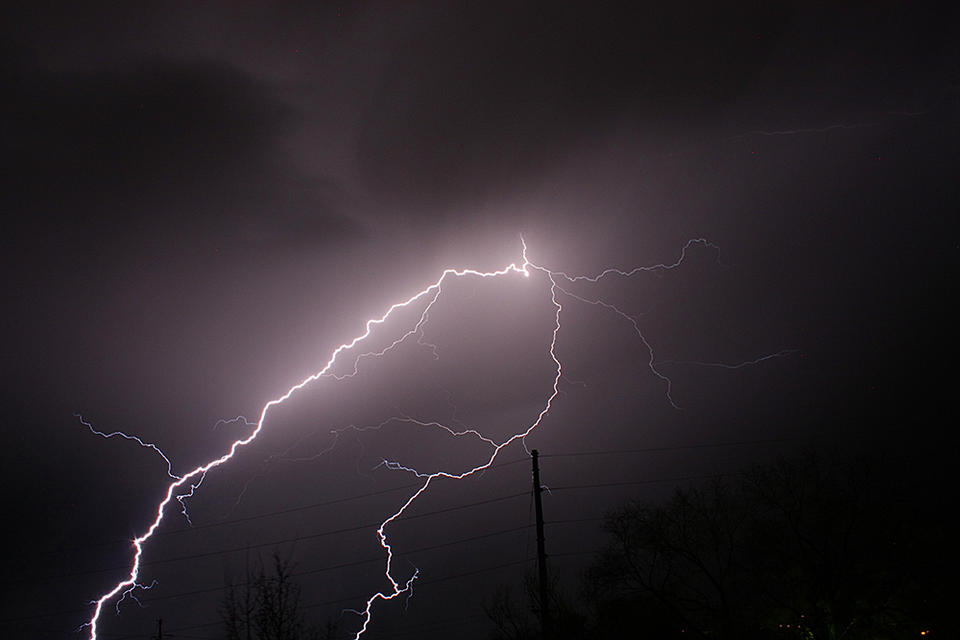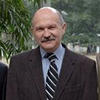Taking Measure
Just a Standard Blog

Creating plasma is not so hard, but using it to generate power is tricky. Here is an example of an everyday plasma you might be familiar with. I took this shot during a terrific thunderstorm while we were meeting in Santa Fe, New Mexico, back in 2013.
Do we really need hot stuff? I’m not talking about Donna Summer’s disco hit of 1979 or global warming. I’m not talking about anything so lukewarm as the surface of our sun—a mere 6,000 kelvins. I don’t even mean something as hot as 1,000,000 kelvins. No, the kind of hot stuff I’m talking about is closer to an unimaginable 200,000,000 kelvins! What possible use could we have for something so hot?
It should be of no surprise to anyone that we have an insatiable appetite for energy, and that appetite is only going to grow. But how are we going to feed this need for energy?
One of the most promising potential ways to generate a practically inexhaustible supply of energy is through nuclear fusion. The conditions inside a fusion reactor are a lot like those inside our sun. There, the intense gravity creates an extraordinarily hot soup of hydrogen nuclei. Every second, about 600 million tons of hydrogen collide and fuse into helium, giving off an incredible amount of energy in the process.
The core of the sun is only about 15,000,000 kelvins, but the temperature inside a fusion reactor is more than 10 times hotter!
Alas, keeping something hotter than the sun in a jar is not easy or cheap, and the cost of building these reactors is so high that there are just a handful of such devices in the world. So, what are we to do? The answer is obvious to any scientist: We develop computer models that can simulate the properties and behavior of this hot soup of electrons and ionized atoms, which we call plasma (a term we physicists stole from biologists). Without good simulations, fusion experiments would be like setting out on an arduous journey into the wilderness without a GPS—you’ll probably get to your destination eventually, but it’s going to take a lot more time and effort.
My part in this story began back in August of 1996 when a small group of scientists from all over the world met at NIST in order to discuss the possible ways to compare the computer codes we had developed to model plasma’s properties. Back then, I worked at the Weizmann Institute of Science in Israel, and that was my first visit to NIST. I was impressed by how big the NIST campus was, how anyone could come and walk around the grounds (O, tempora! O, mores!), and how much wildlife there was ... but while our surroundings were idyllic, the start of our little meeting was anything but.
Before the workshop, my colleague Jeff Nash at the Lawrence Livermore National Lab and I had worked hard to develop an online web system to compare our plasma simulation codes. (Remember, it was only 1996, and the World Wide Web was barely known to most regular folks.) It operated flawlessly when we tested it from both Livermore and Weizmann, but on the first day of the meeting nothing worked because of hardware and connection problems. We had some lively and useful discussions, so the day was not a complete loss, but we were nowhere near achieving our main goal of making intelligent comparisons of our codes. After everybody had left for the evening, we decided to give it another try ... and soon after midnight, the web system was up and running! Happy, excited, and hungry, we left the campus and treated ourselves to a small ice cream from the local McDonald’s.
Fortified with ice cream and sleep, we began to make our comparisons at full steam the next day, and oh boy, happy were we not. The discrepancies between the different codes were mind-blowing, and at first, nobody seemed to have had any clue as to why.
You see, simulating plasma is sort of like looking after a huge litter of excited puppies. You can only really keep your eye on a few at a time, and it’s impossible to predict how one will influence the behavior of another and send them off in search of your shoes. We can’t hope to model the exact behavior of all the puppies, but we can build a general description of how they behave and calculate how much danger your shoes might be in at any certain moment.
Seeing as we had built individual ways to model the collective behavior of our puppies—trillions and trillions high energy electrons and complex ions as they whiz around and slam into each other—it’s no wonder that our calculations were in disagreement, but the degree of our disagreement was disconcerting. We spent the rest of the workshop trying to pinpoint the sources of the differences using our now smoothly running web database and online comparison tools. A few problems were rather straightforward to identify and solve, but many more were not. Although we got off to a rocky start and concluded with a few more puzzles than we had anticipated, we managed to convince the participants that this approach to analyzing plasma simulation software was a good one and must be continued in the future. So we left NIST excited both for what we’d found and for what lay ahead.
It took us another seven years to get back to NIST for the next workshop in December of 2003. By then, I was working at NIST full time and was able to take care of all necessary organizational issues. The web database worked very well, we had more problems to analyze and more codes to compare ... and then, on the last day of the workshop, a huge snowstorm shut down NIST and everything around. Fortunately, almost all the workshop participants were staying at the same hotel, so we managed to get a small room there with a projector and a screen to continue our discussions. Even the bad weather was not able to stop us from trying to get the thing done!
As of now we’ve had a total of nine workshops, and the 10th is planned for next year. Each one has presented us with truly unique problems and conclusions. The locations of our meetings are normally close to where our participants live and work. Is it just luck that they work in Santa Fe and Paris, Vienna and Athens, even the Canary Islands? Maybe … but regardless of the locale, we always try to bring an extra level of excitement to our gatherings. One of the highlights of our meetings is the stargazing session that we organize when we travel to dark locations like Santa Fe, New Mexico. What better way to connect to our work than to see all those twinkling fusion reactors on an incredibly dark night at 10,000 feet above the sea level?
Over the first 20 years of the plasma code comparison workshops we’ve learned a lot, improved our computer models, brought the web databases system to a level where it can now handle huge amounts of data and extract incredibly detailed information on plasma properties, and built flourishing collaborations between different groups of researchers in the U.S. and around the world. Just a few months ago we published a book that summarizes our findings and lays out some new strategies for development of plasma codes. I’m happy to see that our project, which began so inauspiciously, is solving so many problems and generating so many new ideas.
After all, new ideas are the hottest stuff there is.
About the author
Related Posts
Comments
- Reply





